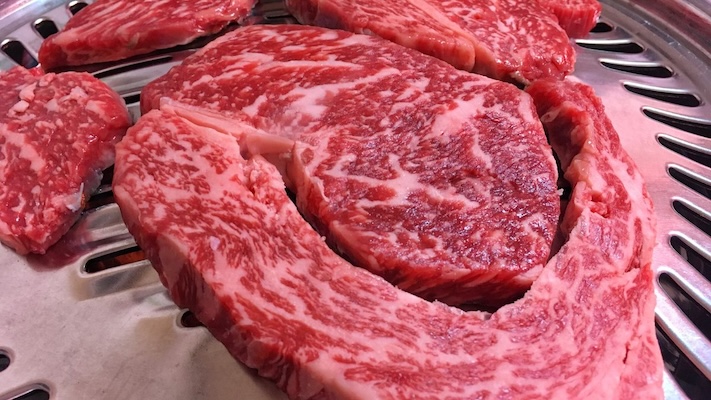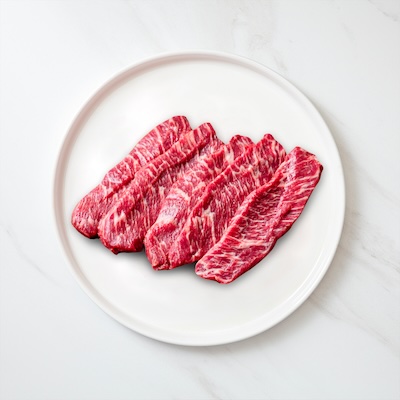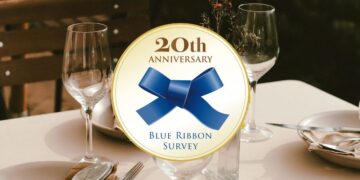Conquer Korean BBQ like a pro! This guide unlocks the secrets of meat cuts & parts, making you a confident explorer of the delicious world of Korean BBQ.
Korean barbecue is a beloved culinary experience enjoyed by people worldwide. However, it’s best experienced in its country of origin, Korea. There, K-BBQ restaurants often specialize in just a few cuts of meat. You might wonder, what are the best cuts and how do they differ? Let’s dive in and explore!
What Is The Best Meat Cut For Korean BBQ?
Well, according to locals, samgyeopsal is the best cut of meat that you can have while enjoying Korean BBQ. It’s juicy, flavorful, irrespective of marination!
What are the popular meat cuts and parts for Korean BBQ?
Samgyeopsal (삼겹살)
Pork belly or samgyeopsal is the most popular Korean BBQ cut in South Korea. There are thousands of restaurants across the country featuring samgyeopsal in their menu. This Korean BBQ meat cut is a celebration of the ideal balance of juiciness in a lean meat. It is also quite popular among foreigners. As for the pricing, it varies. Domestic pork cuts are more expensive as it is of the finest quality.

Moksal (목살)
Another favorite BBQ cut in Korea is moksal or pork from the next. It’s a more delicate meat cut and requires careful handling. If you overcook it, the moksal will become chewy and tough. It’s much less fatty than samgyeopsal, but has more meat.
Hanwoo (한우)
While Wagyu beef is Japan fame, Korea has its own speciality beef cut for BBQ. Hanwoo, coming from a native cattle breed in Korea, is distinct in taste from other options found in the country. It is also pricier and it delivers an experience worth the price. If you are a beef enthusiast, don’t miss out on trying this one as it is totally worth it!

Galbi (갈비)
Galbi or ribs can be either from pork or beef in Korea. You will find boneless ribs in most Korean restaurants with a sweet marinade. While the recipes may vary from one restaurant to another, this Korean BBQ meat cut is quick to grill. It’s a popular barbecue item in Korea. Since it comes with a sweet marinade, the sugar tends to burn quickly. So, make sure you ask for a new grill once the grill becomes too charred.

Hangjeongsal (항정살)
Hangjeongsal also comes from the neck (pork jowl) and is perfect for those who find moksal a bit chewy. As expected, this Korean BBQ meat cut is more rare, tender, and of course, pricier. If you leave it on grill for too long, it doesn’t do very well. So, eyes on the prize when you are grilling it!
Ahnchangsal (안창살)
Ahnchangsal is the outside skirt steak which comes from beef. Although most underrepresented in Korean BBQ, it is one of the most flavorful and tender piece of meat. If it’s cooked properly, it can be as tender as a filet mignon, as flavorful as a NY strip, and sa satisfying as a ribeye.
Dwaejigeopddaegi (돼지껍데기)
Pork rind or dwaejigeopddaegi is another Korean favorite when it comes to barbecuing. It’s almost like a side dish, sort of. If you are too full to have another portion of main cuts of protein, you can try dwaejigeopddaegi. It pops and crackles while grilling so watch out for those! The best way to enjoy pork rinds is to dip in roasted soy bean powder. It adds a delicious flavor to this chewy pork.
Chadolbagi (차돌박이)
Chadol-bagi or thinly shaved beef brisket is one of the popular Korean BBQ meat cuts. Like few others on our list, it is also tender and soft, making it a quick grill cut. Usually, it is unmarinated and comes with sesame oil mixed with salt and pepper. This serves as an incredible dipping sauce for the juicy cut of the meat.

Deungshim (등심)
Sirloin or deungshim is one of the most popular beef cuts in Korea for BBQ. It is not usually marinated, unlike galbi. The fatty and soft cut melts in your mouth when cooked properly. If you are planning a visit to Korean BBQ restaurant soon, this is one meat cut you should definitely try!
Daechang (대창)
Daechang are the beef large intestines, a Korean BBQ meat cut that has a juicy yet chewy texture. There are layers of fat which become visible once it goes on grill. And, once you start grilling it, you will be astounded by the aroma it creates! This beef cut is an irresistible one once you get used to it.
Gopchang (곱창)
Gopchag are the small intestines from either beef or pork. While it may be less fatty than daechang, it is still packed full of flavor. It has a prominent smell and taste along with a chewier texture. Pair it with perilla leaves and gochujang, like the locals do, for a burst of flavors in your mouth.

Makchang (막창)
A distinctive cut, makchang comes from either a cow’s fourth intestine or pig’s last intestine. It is quite leaner compare to daechang, but is still juicy. And it is more chewier and pricier than gopchang. Try beef makchang if you are a newbie as it is more flavorful and less fatty.
Anshim (안심)
Anshim is the Korean for tenderloin that is a full package – texture, juiciness, and flavor. It’s one of the best meat cuts for BBQ. You can always take assistance from restaurant staff to cut bite-sized pieces and remove all tendons.
Salchisal (살치살)
Salchisal is the chuck tail flap and is another rare beef cut in Korea. This Korean BBQ meat cut is in the form of a very thin steak and it is packed full of flavors and has a fine texture.
Gabeurisal (가브리살)
Pork cheek or gabeurisal is the costliest pork cut for Korean BBQ. It is much softer and tender than any of the other pork cuts. As it is a delicate cut of meat, be vigilant, otherwise it will burn easily on the grill!
Pork or Beef? Which is more popular for Korean BBQ?
While Korean BBQ offers a variety of meat cuts, pork takes the crown for its flavor, affordability, and ease of preparation. The readily available cuts found in most grocery stores make it a convenient choice for home cooks and restaurants alike.
When it comes to pork cuts, samgyeopsal, or pork belly, reigns supreme. It gained immense popularity in Korea during the 1980s and 1990s, partly due to limited beef supplies at the time. This succulent cut’s popularity has transcended borders, becoming a beloved staple of Korean BBQ around the world, alongside other delicious meats.
Related Posts
7,077 total views, 8 views today

























